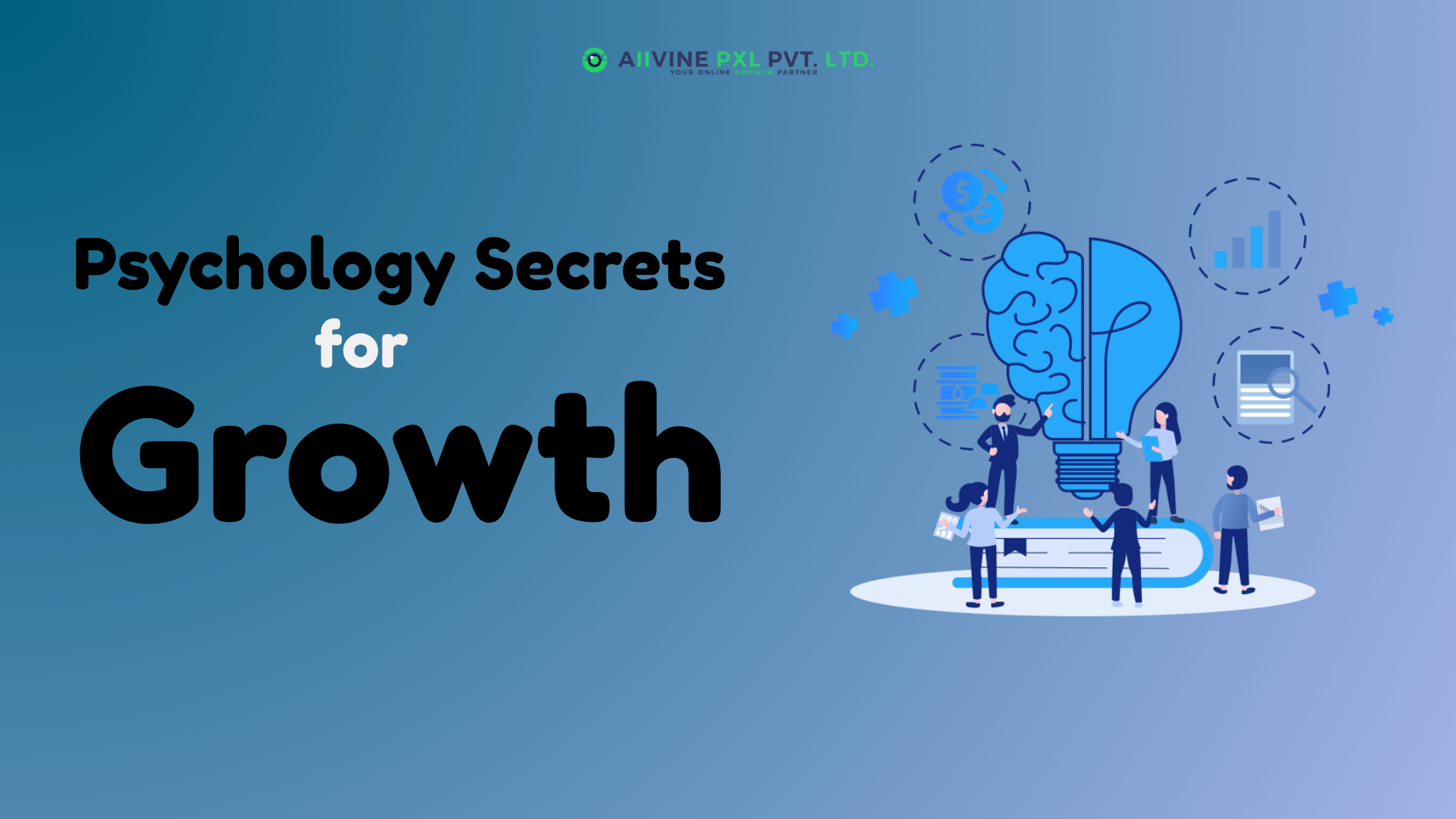Introduction:
Digital marketing isn’t just about flashy ads or catchy slogans—it’s about understanding what motivates your audience to take action. By tapping into the psychology of decision-making, you can create campaigns that resonate deeply and drive conversions.
Here are 7 powerful psychological laws that can reshape your digital marketing strategy and drive exceptional results.
1. The Power of Storytelling
People don’t just buy products—they buy emotions, experiences, and the stories behind them. A compelling story can make your brand unforgettable and create a deep, lasting connection with your audience.
Why Storytelling Works
▶︎ Creates Emotional Connections: Stories evoke emotions, making your brand feel relatable and authentic.
▶︎ Enhances Memory Retention: Research shows that people remember stories 22 times more than plain facts.
▶︎ Builds Personal Connections: When consumers see real struggles and victories, they feel personally connected to the brand.
How to Use Storytelling in Digital Marketing
- Share customer success stories to show real impact and build trust.
- Give a behind-the-scenes look at your brand to make it feel more personal and human.
Leverage user-generated content to showcase authentic experiences and strengthen community engagement.
2. The Scarcity Principle
The scarcity principle is one of the most powerful psychological tools in Digital Marketing. It taps into the fear of missing out (FOMO), a deeply ingrained human emotion that drives people to act quickly to avoid losing out on something valuable. When consumers perceive that a product, service, or offer is limited in quantity or time, they are more likely to take immediate action to secure it.
Why Scarcity Works in Digital Marketing
▶︎ Creates Urgency: Scarcity signals that time or availability is running out, prompting users to act quickly.
▶︎ Increases Perceived Value: Limited availability makes products or offers seem more valuable and desirable.
▶︎ Triggers FOMO: The fear of missing out pushes consumers to make decisions faster to avoid regret.
How to Use Scarcity in Your Online Marketing Strategy
- Create time-bound promotions that expire within a specific period. This could be a flash sale, a holiday discount, or a weekend special.
- Highlight low stock levels to create a sense of scarcity. This works particularly well for e-commerce businesses.
- Tie your offers to specific seasons, holidays, or events to create a sense of urgency.
3. The Social Proof Effect
Social proof is a psychological phenomenon where people look to others to guide their decisions, especially when they’re uncertain. In the world of Digital Marketing, social proof is a powerful tool that builds trust, credibility, and influence. When consumers see others—whether it’s peers, influencers, or experts—endorsing a product or service, they’re more likely to follow suit.
H3: Why Social Proof is Powerful
▶︎ Builds Trust: Consumers are more likely to trust a brand if they see others vouching for it.
▶︎ Reduces Uncertainty: Social proof helps potential customers feel more confident in their decision-making.
▶︎ Validates Quality: Positive reviews and testimonials act as endorsements, signaling that your product or service is worth investing in.
H3: How to Leverage Social Proof
- Showcase customer testimonials and case studies.
- Highlight real-time purchases or trending products.
Use influencer partnerships to enhance credibility.
4. The Power of Personalization
In a world flooded with ads, the ones that truly stand out are the ones that feel personal. When a brand speaks directly to an individual’s needs and interests, engagement skyrockets, and connections grow stronger.
Why Personalization Works
▶︎ Increase Engagement: Personalized emails generate 6 times higher transaction rates than generic ones.
▶︎ Strengthens Brand Loyalty: Customers feel valued and understood, making them more likely to stick with your brand.
▶︎ Increases Conversions: Tailored recommendations make it easier for consumers to say "Yes, this is exactly what I need!"
How to Implement Personalization
- Use Customer Data Smartly with Analyze browsing and purchase history to suggest products they’ll actually love.
- Send Customized Offers that Surprise customers with exclusive deals based on their preferences and past interactions.
Create Dynamic Content or Adapt website, email, and ad content in real time to match each user’s interests.
5. The Role of Colors in Decision-Making
Colors influence emotions and perceptions, making them a key factor in digital marketing success. Different colors trigger different psychological responses, affecting how consumers perceive a brand.
Color Psychology in Marketing
▶︎ Red creates urgency (often used in sales and clearance events).
▶︎ Blue conveys trust and professionalism (popular in tech and finance brands).
▶︎ Yellow evokes happiness and optimism (used by brands like McDonald’s).
How to Use Colors Effectively
- Align brand colors with the desired emotional response.
- Use contrasting colors to make CTAs stand out.
Test different color variations in A/B campaigns to measure performance.
6. The Reciprocity Principle: Give First, Earn Later
When someone does something for us, we naturally want to return the favor. The same applies to marketing—when a brand gives value first, people feel more inclined to engage, trust, and eventually buy.
H3: How to Use Reciprocity in Marketing
- Share Free Value – Offer eBooks, guides, or exclusive content that genuinely helps your audience.
- Let Them Try Before They Buy – Free trials and product samples build trust and confidence in your brand.
- Give Before You Ask – Provide valuable insights, solutions, or tips before expecting a sale.
This principle is the heart of content marketing—when you offer value without asking for anything upfront, your audience naturally gravitates toward you.
7. Simplicity & Clarity: The Key to Winning in Digital Marketing
In the fast-paced world of online marketing, consumers make decisions in seconds. If your website or ad is cluttered and confusing, they’ll leave just as quickly. A simple, clear, and focused message grabs attention and keeps people engaged.
H3: How to Apply Simplicity in Online Marketing
- Keep Messaging Clear & Concise – Use straightforward language that instantly communicates your value.
- Make Navigation Effortless – A well-structured website with easy-to-find information keeps visitors from leaving.
- Streamline Your CTAs – Call-to-action buttons should be direct, compelling, and free of distractions.
Think of Google’s homepage—it’s clean, simple, and gets straight to the point.
Conclusion:
The secret to successful digital marketing isn’t just great ads—it’s understanding people. By tapping into storytelling, social proof, personalization, and psychological triggers like scarcity and reciprocity, brands can craft marketing campaigns that truly resonate and engage.
Instead of just selling a product, focus on building real connections. When your marketing aligns with how people think, feel, and make decisions, engagement rises, conversions increase, and customer loyalty grows stronger. Marketing isn’t about pushing sales—it’s about creating experiences that matter.




